Sina Akbari
Causal Effect Identification in Heterogeneous Environments from Higher-Order Moments
Jun 13, 2025Abstract:We investigate the estimation of the causal effect of a treatment variable on an outcome in the presence of a latent confounder. We first show that the causal effect is identifiable under certain conditions when data is available from multiple environments, provided that the target causal effect remains invariant across these environments. Secondly, we propose a moment-based algorithm for estimating the causal effect as long as only a single parameter of the data-generating mechanism varies across environments -- whether it be the exogenous noise distribution or the causal relationship between two variables. Conversely, we prove that identifiability is lost if both exogenous noise distributions of both the latent and treatment variables vary across environments. Finally, we propose a procedure to identify which parameter of the data-generating mechanism has varied across the environments and evaluate the performance of our proposed methods through experiments on synthetic data.
Sample Complexity of Nonparametric Closeness Testing for Continuous Distributions and Its Application to Causal Discovery with Hidden Confounding
Mar 10, 2025Abstract:We study the problem of closeness testing for continuous distributions and its implications for causal discovery. Specifically, we analyze the sample complexity of distinguishing whether two multidimensional continuous distributions are identical or differ by at least $\epsilon$ in terms of Kullback-Leibler (KL) divergence under non-parametric assumptions. To this end, we propose an estimator of KL divergence which is based on the von Mises expansion. Our closeness test attains optimal parametric rates under smoothness assumptions. Equipped with this test, which serves as a building block of our causal discovery algorithm to identify the causal structure between two multidimensional random variables, we establish sample complexity guarantees for our causal discovery method. To the best of our knowledge, this work is the first work that provides sample complexity guarantees for distinguishing cause and effect in multidimensional non-linear models with non-Gaussian continuous variables in the presence of unobserved confounding.
Multi-armed Bandits with Missing Outcome
Nov 08, 2024

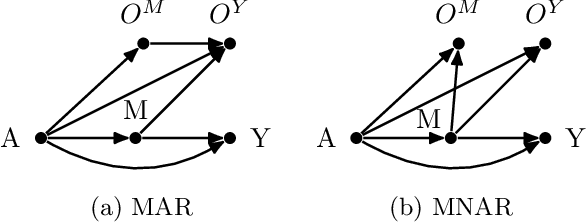
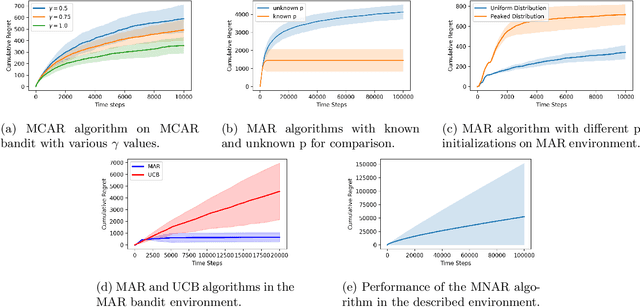
Abstract:While significant progress has been made in designing algorithms that minimize regret in online decision-making, real-world scenarios often introduce additional complexities, perhaps the most challenging of which is missing outcomes. Overlooking this aspect or simply assuming random missingness invariably leads to biased estimates of the rewards and may result in linear regret. Despite the practical relevance of this challenge, no rigorous methodology currently exists for systematically handling missingness, especially when the missingness mechanism is not random. In this paper, we address this gap in the context of multi-armed bandits (MAB) with missing outcomes by analyzing the impact of different missingness mechanisms on achievable regret bounds. We introduce algorithms that account for missingness under both missing at random (MAR) and missing not at random (MNAR) models. Through both analytical and simulation studies, we demonstrate the drastic improvements in decision-making by accounting for missingness in these settings.
CaTs and DAGs: Integrating Directed Acyclic Graphs with Transformers and Fully-Connected Neural Networks for Causally Constrained Predictions
Oct 21, 2024Abstract:Artificial Neural Networks (ANNs), including fully-connected networks and transformers, are highly flexible and powerful function approximators, widely applied in fields like computer vision and natural language processing. However, their inability to inherently respect causal structures can limit their robustness, making them vulnerable to covariate shift and difficult to interpret/explain. This poses significant challenges for their reliability in real-world applications. In this paper, we introduce Causal Fully-Connected Neural Networks (CFCNs) and Causal Transformers (CaTs), two general model families designed to operate under predefined causal constraints, as specified by a Directed Acyclic Graph (DAG). These models retain the powerful function approximation abilities of traditional neural networks while adhering to the underlying structural constraints, improving robustness, reliability, and interpretability at inference time. This approach opens new avenues for deploying neural networks in more demanding, real-world scenarios where robustness and explainability is critical.
Fast Proxy Experiment Design for Causal Effect Identification
Jul 07, 2024Abstract:Identifying causal effects is a key problem of interest across many disciplines. The two long-standing approaches to estimate causal effects are observational and experimental (randomized) studies. Observational studies can suffer from unmeasured confounding, which may render the causal effects unidentifiable. On the other hand, direct experiments on the target variable may be too costly or even infeasible to conduct. A middle ground between these two approaches is to estimate the causal effect of interest through proxy experiments, which are conducted on variables with a lower cost to intervene on compared to the main target. Akbari et al. [2022] studied this setting and demonstrated that the problem of designing the optimal (minimum-cost) experiment for causal effect identification is NP-complete and provided a naive algorithm that may require solving exponentially many NP-hard problems as a sub-routine in the worst case. In this work, we provide a few reformulations of the problem that allow for designing significantly more efficient algorithms to solve it as witnessed by our extensive simulations. Additionally, we study the closely-related problem of designing experiments that enable us to identify a given effect through valid adjustments sets.
Recursive Causal Discovery
Mar 14, 2024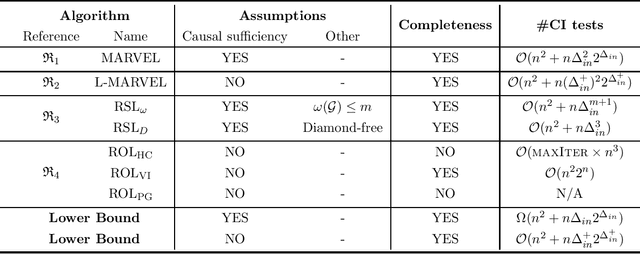

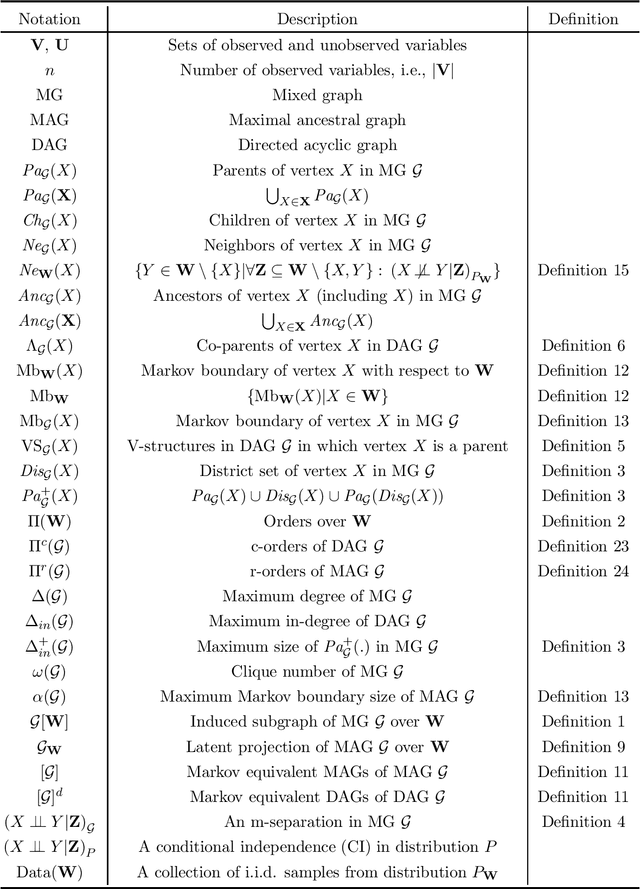

Abstract:Causal discovery, i.e., learning the causal graph from data, is often the first step toward the identification and estimation of causal effects, a key requirement in numerous scientific domains. Causal discovery is hampered by two main challenges: limited data results in errors in statistical testing and the computational complexity of the learning task is daunting. This paper builds upon and extends four of our prior publications (Mokhtarian et al., 2021; Akbari et al., 2021; Mokhtarian et al., 2022, 2023a). These works introduced the concept of removable variables, which are the only variables that can be removed recursively for the purpose of causal discovery. Presence and identification of removable variables allow recursive approaches for causal discovery, a promising solution that helps to address the aforementioned challenges by reducing the problem size successively. This reduction not only minimizes conditioning sets in each conditional independence (CI) test, leading to fewer errors but also significantly decreases the number of required CI tests. The worst-case performances of these methods nearly match the lower bound. In this paper, we present a unified framework for the proposed algorithms, refined with additional details and enhancements for a coherent presentation. A comprehensive literature review is also included, comparing the computational complexity of our methods with existing approaches, showcasing their state-of-the-art efficiency. Another contribution of this paper is the release of RCD, a Python package that efficiently implements these algorithms. This package is designed for practitioners and researchers interested in applying these methods in practical scenarios. The package is available at github.com/ban-epfl/rcd, with comprehensive documentation provided at rcdpackage.com.
Causal Imitability Under Context-Specific Independence Relations
Jun 11, 2023Abstract:Drawbacks of ignoring the causal mechanisms when performing imitation learning have recently been acknowledged. Several approaches both to assess the feasibility of imitation and to circumvent causal confounding and causal misspecifications have been proposed in the literature. However, the potential benefits of the incorporation of additional information about the underlying causal structure are left unexplored. An example of such overlooked information is context-specific independence (CSI), i.e., independence that holds only in certain contexts. We consider the problem of causal imitation learning when CSI relations are known. We prove that the decision problem pertaining to the feasibility of imitation in this setting is NP-hard. Further, we provide a necessary graphical criterion for imitation learning under CSI and show that under a structural assumption, this criterion is also sufficient. Finally, we propose a sound algorithmic approach for causal imitation learning which takes both CSI relations and data into account.
Learning Causal Graphs via Monotone Triangular Transport Maps
May 26, 2023Abstract:We study the problem of causal structure learning from data using optimal transport (OT). Specifically, we first provide a constraint-based method which builds upon lower-triangular monotone parametric transport maps to design conditional independence tests which are agnostic to the noise distribution. We provide an algorithm for causal discovery up to Markov Equivalence with no assumptions on the structural equations/noise distributions, which allows for settings with latent variables. Our approach also extends to score-based causal discovery by providing a novel means for defining scores. This allows us to uniquely recover the causal graph under additional identifiability and structural assumptions, such as additive noise or post-nonlinear models. We provide experimental results to compare the proposed approach with the state of the art on both synthetic and real-world datasets.
Causal Discovery in Probabilistic Networks with an Identifiable Causal Effect
Aug 13, 2022


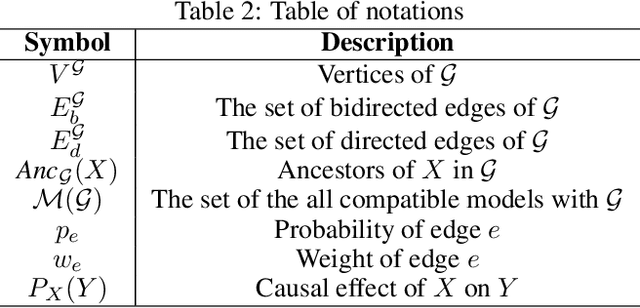
Abstract:Causal identification is at the core of the causal inference literature, where complete algorithms have been proposed to identify causal queries of interest. The validity of these algorithms hinges on the restrictive assumption of having access to a correctly specified causal structure. In this work, we study the setting where a probabilistic model of the causal structure is available. Specifically, the edges in a causal graph are assigned probabilities which may, for example, represent degree of belief from domain experts. Alternatively, the uncertainly about an edge may reflect the confidence of a particular statistical test. The question that naturally arises in this setting is: Given such a probabilistic graph and a specific causal effect of interest, what is the subgraph which has the highest plausibility and for which the causal effect is identifiable? We show that answering this question reduces to solving an NP-hard combinatorial optimization problem which we call the edge ID problem. We propose efficient algorithms to approximate this problem, and evaluate our proposed algorithms against real-world networks and randomly generated graphs.
Minimum Cost Intervention Design for Causal Effect Identification
May 04, 2022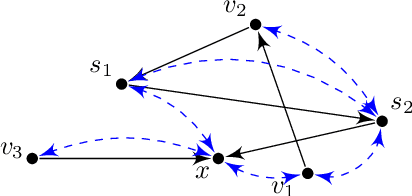
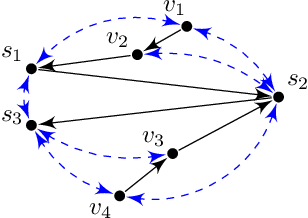
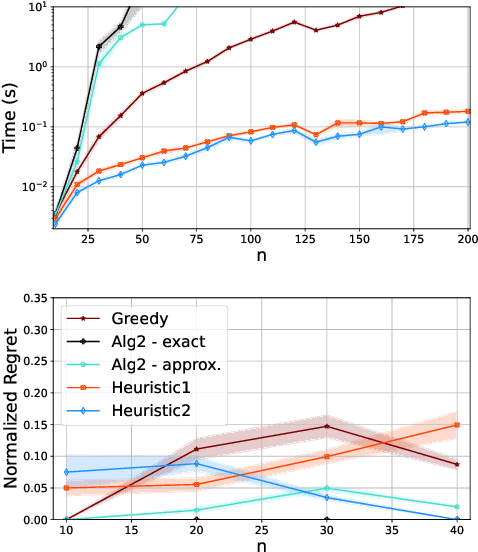
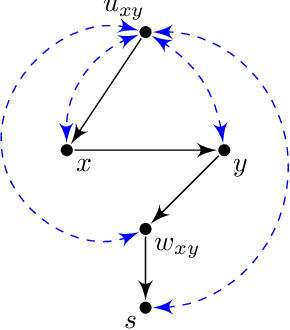
Abstract:Pearl's do calculus is a complete axiomatic approach to learn the identifiable causal effects from observational data. When such an effect is not identifiable, it is necessary to perform a collection of often costly interventions in the system to learn the causal effect. In this work, we consider the problem of designing the collection of interventions with the minimum cost to identify the desired effect. First, we prove that this problem is NP-hard, and subsequently propose an algorithm that can either find the optimal solution or a logarithmic-factor approximation of it. This is done by establishing a connection between our problem and the minimum hitting set problem. Additionally, we propose several polynomial-time heuristic algorithms to tackle the computational complexity of the problem. Although these algorithms could potentially stumble on sub-optimal solutions, our simulations show that they achieve small regrets on random graphs.
 Add to Chrome
Add to Chrome Add to Firefox
Add to Firefox Add to Edge
Add to Edge